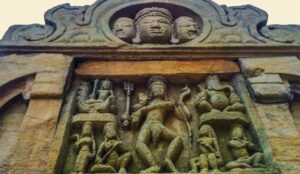Uttarakhand lies a rich tapestry of history, culture, and royal lineage. Among the prominent dynasties that have shaped the region’s historical narrative, the Panwar (or Parmar) Dynasty stands out for its remarkable contributions and enduring legacy.
Origins and Ancestry
The Panwar Dynasty traces its roots to the ancient Rajput clan, which has its origins in the Malwa region of Central India. The Panwars, also known as Parmars, are believed to be descendants of the legendary Agnivansha, one of the four primary Rajput clans. The dynasty’s name is derived from “Parmar,” which means “enemy killer” or “one who slays the foes.”
Rise to Power in Uttarakhand
The Panwar Dynasty established its rule in the Garhwal region of Uttarakhand, a picturesque area known for its lush valleys, towering mountains, and sacred rivers. The kingdom of Garhwal, under the Panwar rulers, flourished and expanded, marking an era of prosperity, cultural development, and architectural advancements.
Key Figures and Rulers
Several notable rulers from the Panwar Dynasty left an indelible mark on the history of Uttarakhand:
Ajay Pal
Ajay Pal, one of the most celebrated rulers, is credited with uniting the fragmented Garhwal region into a cohesive kingdom in the 14th century. He established the city of Srinagar (not to be confused with Srinagar in Kashmir) as the capital, which became a center of administration and culture.
Maharaja Pradyumna Shah
A valiant warrior and astute leader, Maharaja Pradyumna Shah’s reign in the early 19th century was marked by his fierce resistance against the invading Gorkhas. Despite facing significant challenges, his bravery and strategic acumen are remembered as a testament to the resilience of the Panwar rulers.
Sudarshan Shah
After the British expelled the Gorkhas, Sudarshan Shah played a pivotal role in re-establishing Garhwal’s sovereignty. Under his leadership, the capital was moved to Tehri, laying the foundation for the modern princely state of Tehri Garhwal.
Cultural and Architectural Contributions
The Panwar Dynasty’s reign saw a flourishing of cultural and architectural achievements. The rulers were great patrons of art, literature, and religion, leading to the construction of numerous temples, palaces, and forts. Notable among these is the Neelkanth Mahadev Temple, a significant pilgrimage site dedicated to Lord Shiva, and the Tehri Fort, symbolizing the dynasty’s strategic prowess and architectural grandeur.
Legacy and Modern Influence
The legacy of the Panwar Dynasty continues to be celebrated in Uttarakhand. The region’s festivals, traditions, and folklore are deeply intertwined with the stories of the Panwar rulers. Even today, the dynasty’s descendants are respected figures, and their contributions to Uttarakhand’s socio-cultural fabric are honored.
Conclusion
The Panwar Dynasty of Uttarakhand is a beacon of courage, culture, and continuity. Their storied past, marked by unification, resistance, and cultural patronage, has left an indelible mark on the history of the region. As the hills of Uttarakhand continue to resonate with the tales of the Panwars, their legacy inspires pride and reverence among the people, ensuring that the dynasty’s contributions are remembered for generations to come.
The Panwar Dynasty’s rich history offers a fascinating glimpse into the heritage of Uttarakhand, providing a deeper understanding of the region’s royal lineage and cultural evolution. Whether you’re a history enthusiast or a curious traveler, exploring the legacy of the Panwars will undoubtedly enrich your appreciation of this beautiful Himalayan state.
FAQs about the Panwar Dynasty of Uttarakhand
Who were the Panwars?
The Panwars, also known as Parmars, are a Rajput clan that traces its origins to the Malwa region of Central India. They are believed to be descendants of the Agnivansha, one of the four primary Rajput clans.
Where did the Panwar Dynasty establish its rule in Uttarakhand?
The Panwar Dynasty established its rule in the Garhwal region of Uttarakhand, a picturesque area known for its lush valleys, towering mountains, and sacred rivers.
Who was Ajay Pal and what was his significance?
Ajay Pal was one of the most celebrated rulers of the Panwar Dynasty. In the 14th century, he united the fragmented Garhwal region into a cohesive kingdom and established the city of Srinagar (in Uttarakhand) as the capital.
What is Maharaja Pradyumna Shah known for?
Maharaja Pradyumna Shah is known for his valiant resistance against the invading Gorkhas in the early 19th century. Despite facing significant challenges, his bravery and strategic acumen are remembered as a testament to the resilience of the Panwar rulers.
What contributions did Sudarshan Shah make to the dynasty?
After the British expelled the Gorkhas, Sudarshan Shah played a pivotal role in re-establishing Garhwal’s sovereignty. He moved the capital to Tehri, laying the foundation for the modern princely state of Tehri Garhwal.
What are some of the cultural and architectural achievements of the Panwar Dynasty?
The Panwar Dynasty was known for its patronage of art, literature, and religion. Notable constructions include the Neelkanth Mahadev Temple, a significant pilgrimage site dedicated to Lord Shiva, and the Tehri Fort, symbolizing the dynasty’s strategic prowess and architectural grandeur.
What is the significance of the Neelkanth Mahadev Temple?
The Neelkanth Mahadev Temple is a significant pilgrimage site dedicated to Lord Shiva. It reflects the Panwar Dynasty’s devotion to religion and their contribution to Uttarakhand’s spiritual and cultural heritage.
How is the legacy of the Panwar Dynasty remembered today?
The legacy of the Panwar Dynasty is celebrated through Uttarakhand’s festivals, traditions, and folklore. The descendants of the dynasty are respected figures, and their contributions to the region’s socio-cultural fabric are honored.





